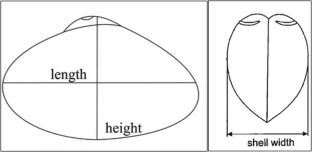热带河流生态系统中微塑料污染的三介质视角:来自潘巴河水、沉积物和双壳蛤壳的见解
摘要
热带河流生态系统中的微塑料污染对水、沉积物和生物隔间构成了多方面的环境挑战。本研究旨在了解喀拉拉邦潘巴河微塑料污染的程度和潜在的生态影响。具体来说,它调查了水、沉积物和cyprinoides蛤组织中的微塑料分布,同时也检查了它们之间的相关性。系统地收集了水、沉积物和双壳类样品,并按照标准环境协议进行了分析。采用机械筛分和移液管分析评估沉积物的质地。记录双壳形态计量学以评估与尺寸相关的微塑料摄取。通过消解、密度分离和过滤提取微塑料,并用体视显微镜和拉曼光谱对其进行表征。风险评估包括污染负荷指数、聚合物危害指数和估计膳食摄入量。沉积物粒度显示了下游的细化,从上游100%的沙子(seeththodu - mallappally)转变为Kuttanad (Nedumudy, Kainakary)的35%粘土和10%淤泥的混合沉积物。相应地,微塑料浓度在下游上升,水样从19 MPs/L (seeththodu)到149 MPs/L (Nedumudy),沉积物从11 MPs/kg (seeththodu)到211 MPs/kg (Kainakary),蛤壳平均为2.95 MPs/贝壳(20个标本共59 MPs)。微塑性形态以纤维为主(水:503,沉积物:514,蛤壳:34),其次是薄膜和碎片,最小检测到珠子。粒径分布显示,水中(527)和蛤蜊(48)中普遍存在1000µm的颗粒,而沉积物中则倾向于3000µm的颗粒(583)。有色微塑料的数量明显超过无色微塑料(沉积物:843比184)。聚合物分析表明,聚乙烯(PE)占主导地位(水:215,沉积物:288,蛤:17),其次是聚丙烯(PP),而密度更大的聚合物PET和PS则不存在于蛤的组织中,表明聚合物密度和形态介导了选择性的生物积累。Kainakary(4.4)、Nedumudy(4.2)和Thakazhy(3.7)沉积物的污染负荷指数(PLI)达到峰值,而聚合物危害指数(PHI)达到13811,表明沉积物是一个关键的污染水库。估计膳食摄入量(EDI)表明,每年通过食用蛤蜊摄入的微塑料为0.128 MPs/g/kg体重(13 kg/年)。这些发现强调了水文、沉积学和生物相互作用的复杂相互作用,形成了热带河流系统中微塑料的命运和风险,为有针对性的缓解策略提供了信息。

Microplastic pollution in tropical riverine ecosystems poses multifaceted environmental challenges across water, sediment, and biotic compartments. This study aims to understand the extent and potential ecological impact of microplastic contamination in the Pamba River, Kerala. Specifically, it investigates microplastic distribution in water, sediments, and Villorita cyprinoides clam tissues, while also examining correlations between them. Water, sediment, and bivalve samples were systematically collected and analysed following standard environmental protocols. Sediment texture was assessed using mechanical sieving and pipette analysis. Bivalve morphometrics were recorded to evaluate size-related microplastic uptake. Microplastics were extracted via digestion, density separation, and filtration, then characterized using stereomicroscopy and Raman spectroscopy. Risk assessments included Pollution Load Index, Polymer Hazard Index, and Estimated Dietary Intake. Sediment granulometry exhibits downstream fining, shifting from 100% sand upstream (Seethathodu–Mallappally) to mixed sediments with 35% clay and 10% silt in Kuttanad (Nedumudy, Kainakary). Correspondingly, microplastic concentrations escalate downstream, with water samples ranging from 19 MPs/L (Seethathodu) to 149 MPs/L (Nedumudy), sediments from 11 MPs/kg (Seethathodu) to 211 MPs/kg (Kainakary), and clam shells averaging 2.95 MPs/shell (total 59 MPs in 20 specimens). Microplastic morphotypes are fiber-dominant (water: 503, sediment: 514, clam shells: 34), followed by films and fragments, with beads minimally detected. Size distribution reveals particles < 1000 µm prevalent in water (527) and clams (48), whereas sediments favor > 3000 µm particles (583). Coloured microplastics outnumber colourless counterparts significantly (sediments: 843 vs. 184). Polymer analysis identifies polyethylene (PE) as dominant (water: 215, sediment: 288, clam: 17), succeeded by polypropylene (PP), with denser polymers PET and PS absent from clam tissues, indicating selective bioaccumulation mediated by polymer density and morphology. Pollution Load Index (PLI) peaks in sediments at Kainakary (4.4), Nedumudy (4.2), and Thakazhy (3.7), while Polymer Hazard Index (PHI) reaches 13,811 in sediments, highlighting sediment as a critical pollution reservoir. Estimated Dietary Intake (EDI) suggests annual human microplastic ingestion of 0.128 MPs/g/kg body weight via clam consumption (13 kg/year). These findings underscore the complex interplay of hydrology, sedimentology, and biotic interactions shaping microplastic fate and risks in tropical riverine systems, informing targeted mitigation strategies.

 求助内容:
求助内容: 应助结果提醒方式:
应助结果提醒方式:


